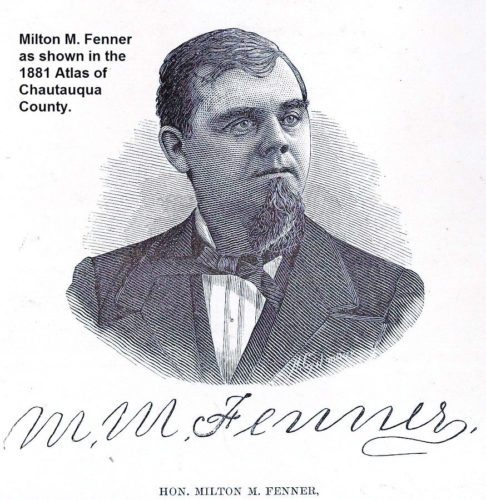Structure built after Civil War
FULL?HOUSE OF?HISTORY FOR?FREDONIA

Editor’s note: This information was submitted after a story in the OBSERVER regarding the possible demolition of the Fenner House.
The Wolfers/Fenner/Kasling house at today’s 178 Central Avenue was built after the Civil War by the Fredonia carpenter Robert Wolfers (1816-1897), who is also known for the majestic Wolfers/Ellis house, a Greek Revival home built before the Civil War and located at today’s 100 Eagle St.
Wolfers also built a number of smaller Greek Revival homes on each side of the Wolfers/Ellis house, including today’s 104 Eagle St. Several others remain on the easterly side of Eagle Street, which was then the main road from Fredonia to Laona, Shumla, Sinclairville, Gerry, and Jamestown.
Wolfers, who also built the original Normal School preceding today’s 1 Temple Square, lived for a time at 178 Central Ave. before his family conveyed it to Dr. Milton M. Fenner (1837-1905), who was locally famous as the manufacturer of bottled medicine marketed as “People’s Remedies.” Originally from nearby South Stockton, Fenner was also a state legislator and was connected to a number of business enterprises, including the Dunkirk Fredonia Electric Railroad and the Columbia Hotel, which once stood at today’s 1 Park Place.
Although Fenner’s own connections to the anti-slavery movement and the Civil War were little to none, he married Georgiana Grandin (b. 1843), the daughter of two of Jamestown’s documented Underground Railroad operatives, Daniel Grandin (1811-1893) and Louisa Waite Grandin (1813-1890). Fenner’s herbal concoctions were milled for him by Eber M. Pettit (1802-1885) and Darwin R. Barker (1820-1885), who were documented Underground Railroad operatives in Versailles.
The stately and enormous beech tree in front of the Wolfers/Fenner/Kasling house was listed by Jim Wilmoth in 2012 on his historic list of “Big Trees in Fredonia,” some of which have already disappeared. Fenner’s factory was located in the former Methodist church, which stood at today’s 44 Center St. Local artist and Fenner descendant Peg Aular inherited the doctor’s medicinal recipes, and donated them to the Darwin R. Barker Museum. During the mid-20th century, the home at 178 Central Ave. was known as the House of Kasling.
Images for this compilation are courtesy of the Barker Museum and the Chautauqua County Historic Structures database. Interested readers will also find Doug Shepard’s article, “Milton Marion Fenner and His Times,” which was produced for the Barker Museum in 2009, and is found today at Historic Structures. Life spans are courtesy of Lois and Norwood Barris. Additional Barris and Shepard articles about Fredonia’s history may be found at the Chautauqua County Historian’s website. Additional data regarding anti-slavery activists may be found at the mapping site orbitist.com/ugrr.












